Champlain and Quebec
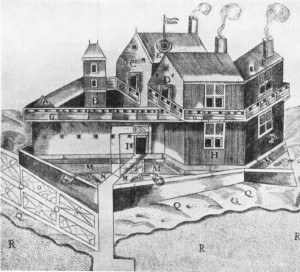


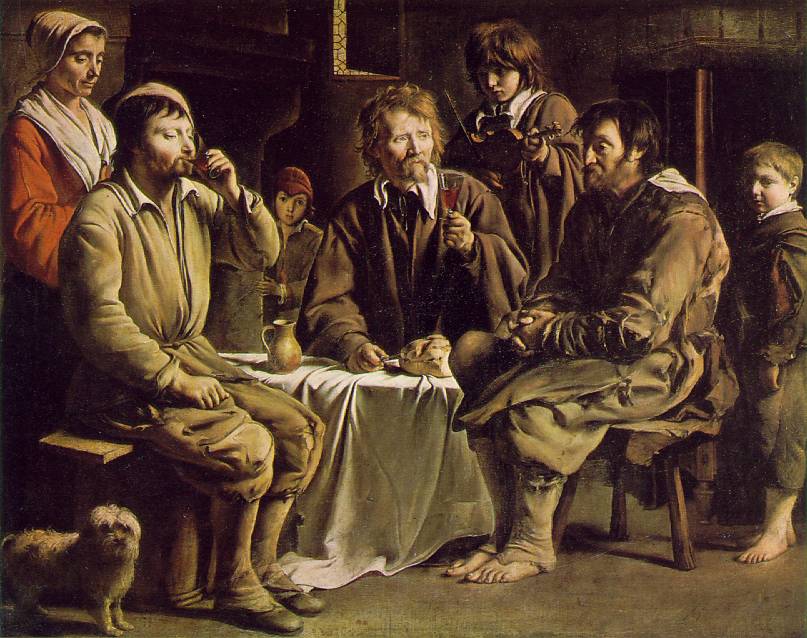
Jesuits and Huron
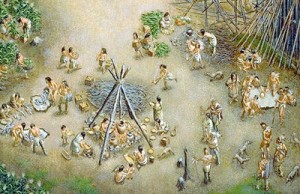


Royal Government
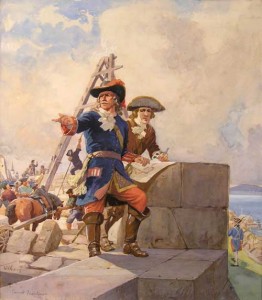
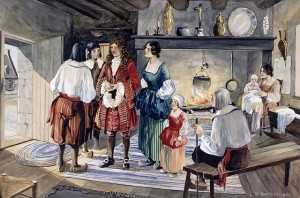
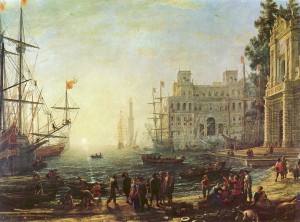
Coureurs de Bois

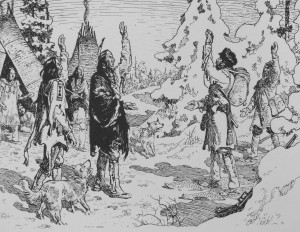
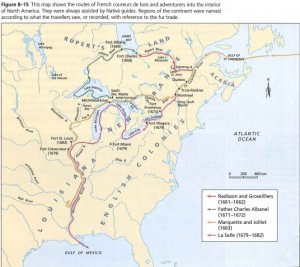
Seigneury
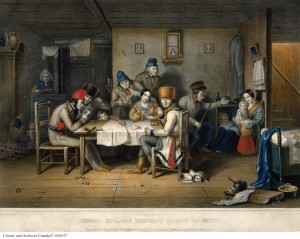
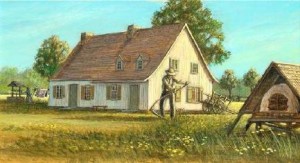
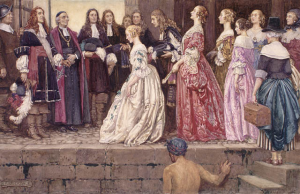
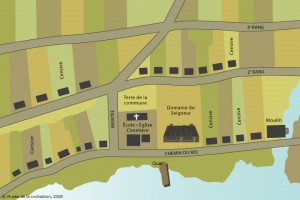
Imperialism and Conflict — France vs England

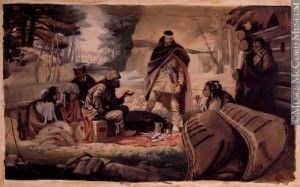
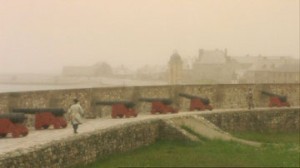
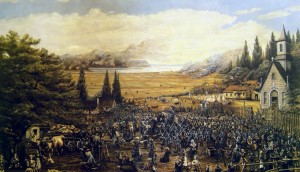

Seven Years War 1756-1763
Causes
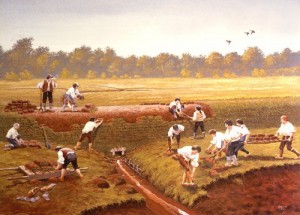
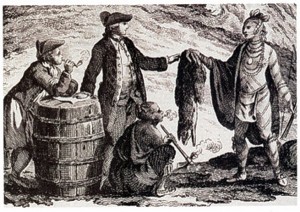
Battles

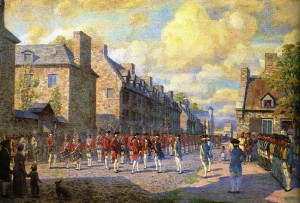
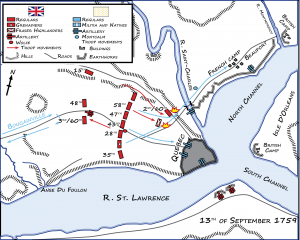
Consequences
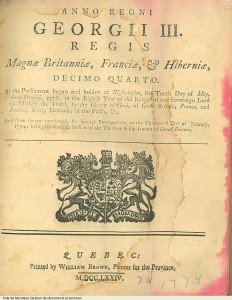
Champlain and Quebec




Jesuits and Huron



Royal Government



Coureurs de Bois



Seigneury




Imperialism and Conflict — France vs England





Seven Years War 1756-1763
Causes


Battles



Consequences

Many events happened during the French Revolution. The French Revolution included several acts of violence, but it also resulted in better equality and rights for the people of France. The National Assembly, March on Versailles and the Execution of Louis XVI were the three most significant events, due to their role in shaping the course of the event.

The National Assembly granted many citizens the rights that they desired and began to change the way France was governed. This was significant because it changed the whole government system. It took part in shaping the course of the event because it ended serfdom and gave peasants the ability to grow crops for themselves and their families, instead of the king. If this event did not occur, the outcomes of the other events could have possibly been changed.

Women were very frustrated with the pro-longed food crisis, so they felt it was best to take matters into their own hands.They did this by speaking directly to the king in Versailles. This event held an immediate effect on the people of France and others who were involved. This also had long term effects, due to a large group of men and women that had attacked the palace. The way the women spoke to Louis XVI, managed to play a part in changing the course of the revolution. Those factors are what made this event significant.

The people of France were very upset with the king’s actions, this resulted in King Louis XVI being executed by the guillotine, on January 21st 1793. This was significant because it was the turning point of the Revolution, after Louis was executed, France was made a republic. It also gave the radicals a chance to get the things that they wanted and couldn’t get when Louis was alive. The formation of the republic had a high impact on the people of France because it lead into the Reign of Terror. Louis’ execution created long term effects and without this, the other events might not of happened.
Without the National Assembly, March on Versailles and Louis’ Execution, the revolution might not of happened the way it did, or might of had a different outcome. The French Revolution came with many gains, although there were several deaths, the good outweighed the bad. Without this revolution, we would not have as many freedoms that we have now.
1765 — 1774
Stamp Act

The Stamp Act was a tax, made by British authority that was placed on items that were bought and sold. This tax was created after the seven years war, because of the massive dept the British were in. Americans were enraged and felt like they had no British Parliament representatives, and felt they were being “taxed without consent”. The tax collectors were then attacked by Colonists, through a process of tarring and feathering. The Stamp Act was then repealed in 1766.
Townshend Acts

The real intent was to prove to Americans that Britain still had right and authority to tax the thirteen colonies. This Act was a new tax on paper, paint, glass and tea. Americans strongly disliked this tax and began to protest. The taxed was abolished shortly after, but the tax on tea remained to support the East India Company.
Boston Massacre

On March 5 1770, local families were forced to put up soldiers in their homes. Some of the American Colonists were standing in Boston protesting, and began to provoke the British soldiers by throwing rocks and snowballs at them. A British soldier misunderstood an order and fired into the Boston protesters. Five people were killed. The ” Boston Massacre” was quickly turned into an anti-british propaganda by the colonial leaders.
Tea Act and Boston Tea Party

The Tea Act protected the British East India Company by making it the only company that was able to sell tea. On December 16th 1773, 116 people boarded British ships that were docked in Boston and destroyed a fortunes worth of tea by dumping it into the harbour. The Boston Tea was meant to protest the Tea Act became an important and symbolic event leading to the American Revolution.
Intolerable Acts

The intolerable acts were a series of acts Parliament passed, that were meant to punish Boston and assert British authority. The Boston port Act closes port of Boston until the East India Company is compensated for the destroyed tea. Massachusetts Government Act is the Act that says colony government are appointed by the British town meetings are held once a year. Quartering Act is, colonial governors may house soldiers in vacant buildings. Administration of Justice Act is, British officials may have their trials in another colony. Lastly, the Quebec Act made French language and Roman Catholicism official in the British Colony of Quebec.
First Continental Congress

With the First Continental Congress, leaders demanded a boycott of British goods from England and cutting economic ties. Americans demanded that the intolerable acts must be repealed, but the British Government refused.
1775 — 1781
Battle of Lexington and Concord


King George authorized the deliverance of British soldiers to reinforce those who occupied Boston since 1768. Gage was sent to Boston to disarm the colonists and arrest John Hancock and Samuel Adams. He sent 700 troops to march to concord to destroy artillery and ammunation. Colonists moved their weapons to a safe location before the Red Coats arrived. Gage’s wife gave Warren info about the raid in sympathy to the revolution. The British arrived and someone shot the “The Shot Heard Round’ The World”. The gun battle erupted as they crossed the North bridge. Minutemen held the bridge and the redcoats were forced to retreat. By the time the redcoats made it back to Boston, 73 were dead and 174 were wounded. The American revolution had officially started.
Battle of Bunker Hill

On June 16th 1775, American troops under the orders of Artemas Ward moved their camp. They entrenched on a rise on Charleston, Peninsula – overlooking Boston. Their destination was Bunker Hill. Ward’s men misunderstood his orders and went to Breeds Hill instead, this was closer to the British. William Howe’s ship open fired on the Americans, the Americans also waited until the British were within 15 paces to attack, scores of British troop were wounded or killed, the rest retreated down the hill. On July 2nd, 1775, George Washington rode into Cambridge, Massachusetts, to take over the new American army.
Thomas Paine’s Common Sense

Thomas Paine’s Common Sense was published in January 1776, nearly 120, 000 copies were in circulation by April. Thomas argued for independence from England and the creation of a democratic republic. He wrote in the language of the people, quoting the bible in his arguments, because of the large amount of religious people in England. It made no difference that Paine was new to America, many readers attributed this to John Adams, who denied involvement. His prose was common sense, all the questions led many readers to one answer as the summer of 1776 drew near.
Declaration of Independence

On June 17th, 1776 Richard Henry Lee made a resolution to the Congress that made the 13 colonies free and independent states. Thomas Jefferson, John Adams and Benjamin Franklin chose the careful wording for it. The declaration was divided into three parts, statement of intent, list of grievances and dissolving ties with Britain. On July 4th 1776, the colonies approved the document, John Hancock signed the bottom and history was made If American efforts were successful, they’d be hailed as heroes, if failed, they’d be hung as traitors
Battle of Trenton


General Washington planned an attack on the Hessians from three directions to be executed, on December 26, 1776. Approximately 4 in the morning, the crossing was completed and the continental army began the march to Trenton. The first gunfire happened about a mile north of Trenton at Heissan outpost, Heissan forces became surrounded by Americans and were forced to surrender. Two Americans were killed, five were injured and many suffered from hypothermia and diseases. 896 Heissans were captured and several hundred escaped. The battle inspired the war and raised the morale of the army.
Battle of Saratoga

The British planned to cut off New England from the rest of the colonies by taking New York, Albany and the Hudson River. Generals, Burgoyne, St. Legar and Howe met at Albany to defeat the rebel armies, Burgoyne’s army became trapped in Saratoga and was blocked by General Gates. On October 7th 1777, Burgoyne attempted to attack the larger Patriot force. His army was defeated by Arnold’s army at Bemis Heights, due to a lack of supplies and high casualties, Burgoyne surrendered. The Patriot victory at Saratoga was a turning point in the war, it renewed the morale of the Americans and convinced France that the Americans could win the war.
Battle of Camden

In 1780, the British shifted military strategies to focus on the colonies. The British army took the Loyalist Stronghold of Savannah and captured Charleston and over 5,000 Patriot soldiers. On July 1780, the Continental Congress gave command of a second southern army to Horatio Gates. Charles Cornwallis recieved word of Gates’ and marched 2000 troops from Charleston. The armies met after dawn on August 16th 1780. Gates’ army began to flee before he fled from the battleground as well. The battle resulted in devastation, over 1000 were captured and 900 were killed or wounded. The defeat at Camden marred the reputation of Gates, he was replaced by Nathaniel Greene, who lead the resurgence of the Southern Army.
Battle of Cowpens


After initial British charge, the first two lines of Patriot fighters withdrew. Tarelton believed Patriots were in full retreat and ordered soldiers to charge. He was not aware of a third line of Patriot fighters waiting for the British charge. British forces charged directly into the third line of Patriots who halted British advance with a bayonet charge. British soldiers surrendered, while others turned and ran away. The British army was outflanked and Patriot forces began attacking the British from behind. British forces began to retreat despite Tarelton urging them to continue fighting. Morgan captured 712 British soldiers and 110 of them were killed. The battle was a turning point in the Southern campaign. Cowpens ultimately was the first step in the eventual end of the war, as it caused Cornwallis to abandon South Carolina, engage Greene at Guilford’s Courthouse and eventually withdraw his army to Yorktown where his army would eventually come under siege and surrender
Battle of Guildford Courthouse

Charles Cornwallis resolved to destroy the continental army. He decided to attack despite the fact he had less soldiers than Greene. His army had 1,900 soldiers, Greene had 4,500 soldiers. At 1:30pm on March 15, 1781, the battle had begun. The British army forced Greene’s’ first two lines to retreat. The Battle lasted less than 2 1/2 hours, Cornwallis army reduced by over 25%. He led his army to Yorktown, Virginia in hope to make a bigger army. Yorktown was the mighty siege for his army, American and French forces, that would lead to the war’s end
Battle of Yorktown


A major objective of the French-American forces were to liberate New York City. On September 1781, combined forces of Rochambeau and Washington marched south. Near the end of September American forces trapped Cornwallis in the west. Comte de Grasse’s navel forces trapped Cornwallis in the east. A siege had begun. On October 6, 1781, American and French guns began to shoot bullets in the British defenses from land and water. Cornwallis had finally surrendered. Americans took over 7000 troops prisoner, the war was coming to an end. Battle of Yorktown was the last major battle of the war.
1783 — 1791
Treaty of Paris

Britain agreed to recognize American independence. They gave Americans fishing rights to the Grand Banks off the coast of Newfoundland. Britain granted U.S. all territory between Allegheny Mountains on the east and Mississippi River on the west.
Loyalists

Approximately 20% of American colonists supported British rule and remained loyal. Loyalists were persecuted by the Patriots during the war. Patriots abused them and burned their homes and farms,
after the revolution and Treaty of Paris was signed, between 80,000-100,000 Loyalists had to leave the U.S. Many settled in other British colonies in North America – Quebec, Nova Scotia and Island of St. John (PEI)
Constitution

The Constitution 1789 outlines the structure and powers of government. It is three branches of government are separate, checked and balanced off by the power of the other two. The U S Constitution is supreme and all persons are equal before the law. People can change the constitution by the methods within it.
Bill of Rights

The first 10 amendments (additions) of the constitution. The Bill of Rights represents ideals regarding individual liberty, limited government, and the rule of law.
Worldwide Influence

The American Revolution spreads ideas of liberty, individual rights and equality to other parts of the world. It influenced and inspired other revolutions around the world such as France in 1789. American Declaration of Independence had some impact on the French Declaration of the Rights of Man and the Citizen of 1789.
Causes
Charles I Advisors were Unpopular

Charles I advisors made a strong impact on Parliament and altered the intensity of this event. His advisors disrespected the church of England because of their actions for increasing decorations and rituals in the church of England, which parliament also attended. This influenced parliaments decision for passing the grand remonstrance that Charles desired.
Components
New Model Army

Oliver Cromwell reorganizing the parliamentary army played a huge part in the battle of Naseby. If Cromwell didn’t rebuild the army, there was a chance that the civil war would have had a different outcome. The original army might have been weaker than the new army and that could of resulted in Charles defeating parliament, not given the chance to escape and not given the chance to take refuge on the Isle of Wight.
Battle of Naseby

This was the turning point of the civil war. The battle of Naseby had cost the king a large part of his army members. if this hadn’t of happened, Charles could have had a chance to defeat parliament. Those losses also had a huge influence on his decision to surrender, due to him not being able to keep up with those steady losses.
Charles I Escapes

If Charles had accepted the Parliamentary army’s peace terms, there wouldn’t of been as much tension between Charles and parliament. Also, if he accepted the terms there would be a different outcome. The battle of Preston wouldn’t of happened because he wouldn’t have had a chance to make an agreement with the Scott’s, get their support and take refuge on the Isle of Wight.
Consquences
Army Purged Parliament

Army purging Parliament made a large impact and immediate effect. The purging done by the army, changed the empowerment of the people, by changing the style of government. Since puritans were the only ones that were allowed to be apart of parliament, they all had the same mind set to get rid of the king. There was no variety or negotiation, and because of that, Charles I was sentenced to death so quickly. None of the other events would of happened if the army never purged different members of parliament.
Components
Cromwell Dismisses Parliament

Cromwell dismissing parliament and ruling without them shaped the course of the event and had long term effects attached to it. This was very hypocritical for Cromwell to do, considering he fought so hard to eliminate Charles for ruling without parliament. The results of this is important, considering Cromwell then could do whatever he wanted because Parliament was not there to objectify it. Cromwell was beginning to lead in similar ways to Charles.
Blue Laws are Imposed

The introduction of blue laws had a high impact and immediate effect. It was also the climax during this time of the event. The blue laws were based on only the Puritan religion. Leaving no space for other religions to have their rituals. These laws became unpopular to England and the people because it gave them no freedom. The Blue Laws banned theaters, horse-racing, cockfighting, wrestling and bear and bull baiting. Puritans did not approve of music and art. The people of England also could not eat on Wednesday (day of fast), on Sundays the shops were closed and there was no games, sports or business.
Parliament Passes the Test Act

Parliament passing the test act had a large impact on this time of the English revolution. The test act was significant because it indicated to Charles that Parliament is responsible for making the laws, not Charles himself. Charles continued to keep his secret, him being a Catholic, from the people of England until he died. I feel he did that because the test act stated that Catholics shall not become members of Parliament, or hold any other high office (government).
James II Violates Test Act

When James violated the test act, it made a big impact and resulted in negative immediate effects. This violation angered Parliament severely. The test act specifically stated that Catholics will not hold any government positions, but, James decided to make Catholics fill in those positions despite the Test Act. It influenced Parliament to call his daughter (Mary), to have her and her husband replace him with the throne and to become King and Queen.
James II Abdicates the Throne

James abdicating resulted in the Glorious Revolution. William (Mary’s husband) invaded England to claim the throne from James. James abdication happened due to the lack of support he was able to receive, after he abdicated, he then left England. The Glorious Revolution was significant because it was the first time the monarch was chosen by Parliament, not hereditary right.
The Cromwell film was useful in giving information about how the king behaved. It allowed us to see the way he ruled, what his specific punishments would be if someone were to disobey him and how he did not rule according to the law. I feel that section of the film was represented better than the others. The film also showed us the impact he made on other people and how strongly religious they all are. I think they did a decent job with this film considering the criteria they had to follow.
Is V more of a freedom fighter or terrorist?
I feel V is proceeding with the actions of a terrorist, but he has good intentions. I think he has the motives and intentions of a freedom fighter, although the steps that he is taking are done poorly, in the way of a terrorist. That is probably why some people are afraid of him and others are choosing to fight against him, rather than with him.